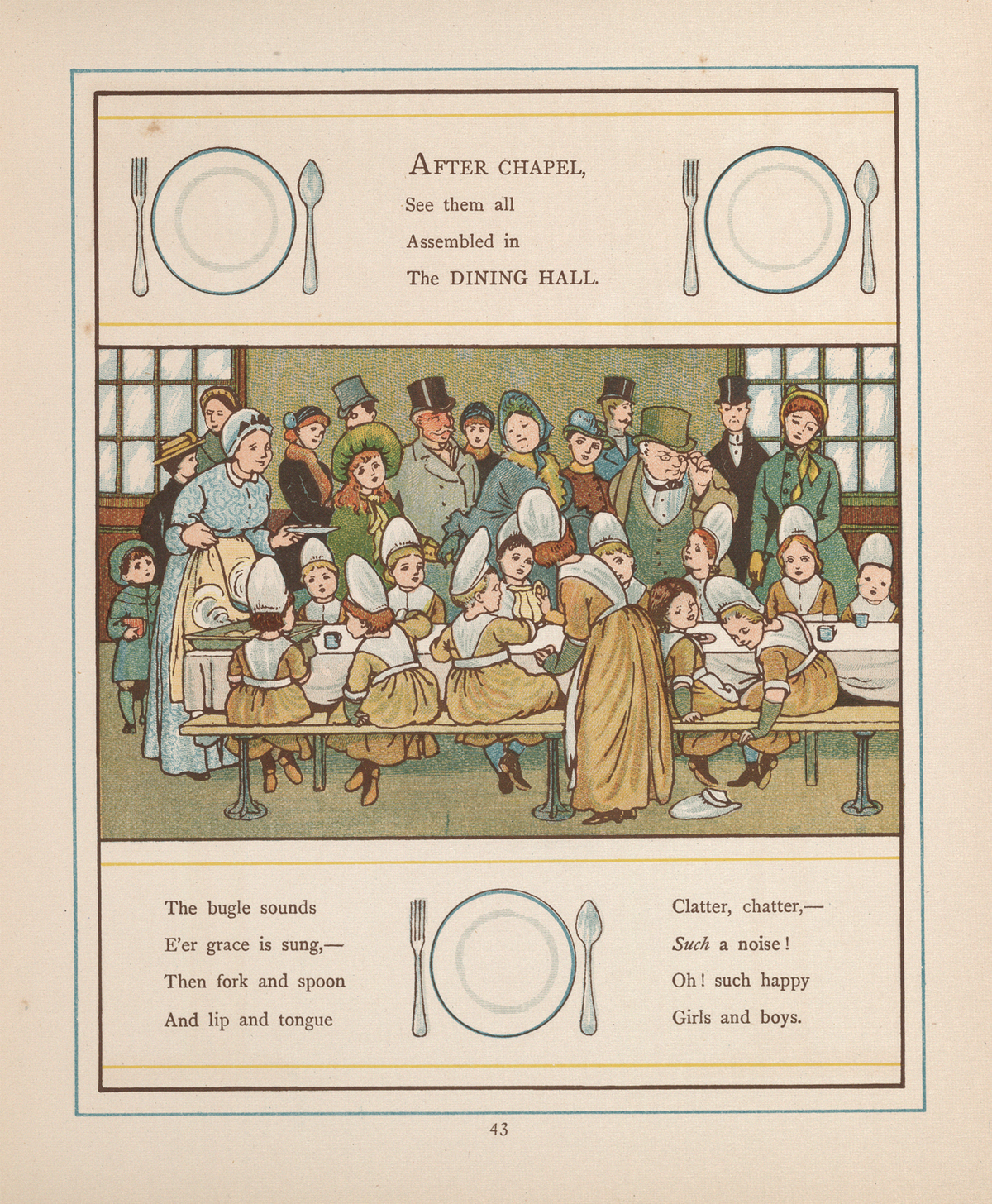
Foundling Hospital London: Visiting Hours, Tickets, and Historical Guide
Date: 14/06/2025
Introduction
Nestled in Bloomsbury, the Foundling Hospital stands as a cornerstone of child welfare and cultural philanthropy in London. Established in 1739 by Thomas Coram, it pioneered compassionate care for abandoned children at a time when infant mortality and social neglect were rampant. Evolving from a charitable institution to a vibrant museum, the Foundling Hospital not only transformed attitudes toward child welfare but also became Britain’s first public art gallery and a hub for music philanthropy, thanks to supporters like William Hogarth and George Frideric Handel (Foundling Museum; Regency History; Coram Story). Today, the Foundling Museum invites visitors to explore this remarkable legacy through its exhibitions, preserved architecture, and engaging programs. This detailed guide covers the hospital’s history, cultural impact, and all the practical information you need for your visit, including Foundling Hospital visiting hours, tickets, accessibility, and travel tips.
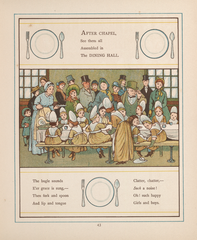
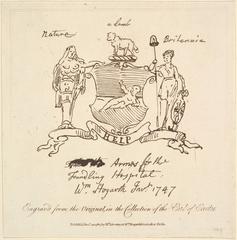

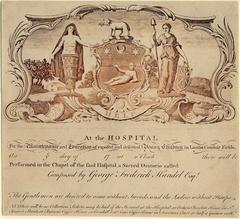
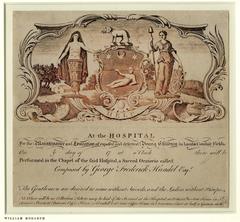
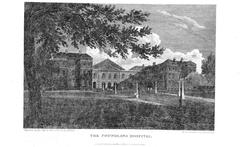
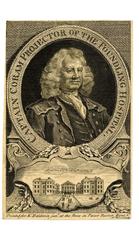
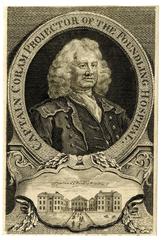
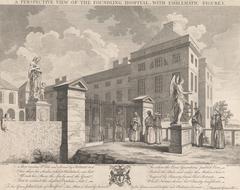
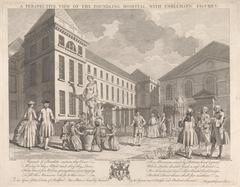
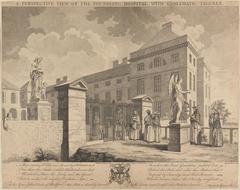
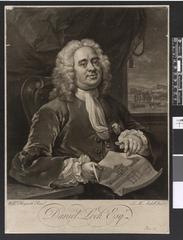
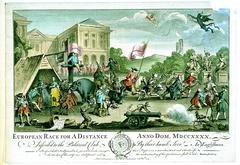
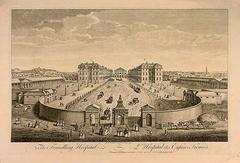
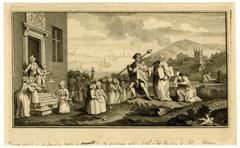
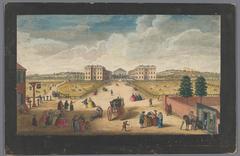
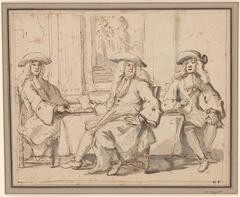
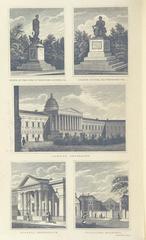
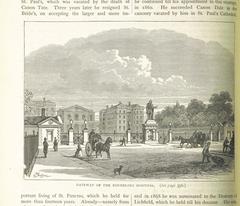
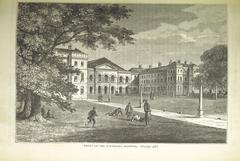
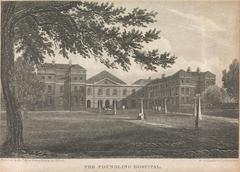
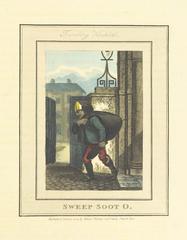
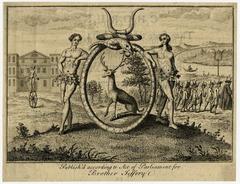
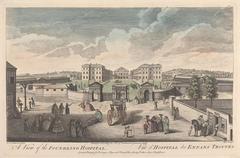
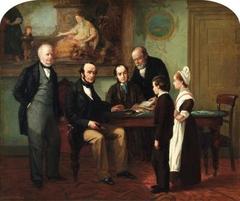 Abbott and Holder in December 2019, when it was described as "NICHOLSON Sir William (1872-1949) ‘The Foundling / Night’. Pencil. Signed and inscribed. 6x8.5 inches. Framed: 14.25x16 inches."">
Abbott and Holder in December 2019, when it was described as "NICHOLSON Sir William (1872-1949) ‘The Foundling / Night’. Pencil. Signed and inscribed. 6x8.5 inches. Framed: 14.25x16 inches."">
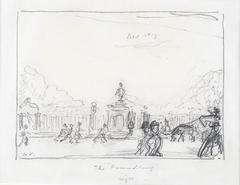
Table of Contents
- Origins and Founding Vision
- Early Development and Expansion
- Cultural Impact and Notable Supporters
- Daily Life and Education
- Architectural and Social Legacy
- The Modern Era & Foundling Museum
- Visitor Information: Hours, Tickets & Access
- Museum Highlights: Exhibitions and Collections
- What Makes the Visit Special
- FAQ
- Summary and Travel Tips
- References
Origins and Founding Vision
The Foundling Hospital was founded in 1739 by Thomas Coram after nearly two decades of campaigning to protect London’s abandoned and destitute children. Securing a Royal Charter from King George II, Coram’s vision was radical: to offer shelter, education, and a future to infants otherwise doomed to neglect or death (Foundling Museum; Regency History). Here, “hospital” meant a place of hospitality and care, rather than medical treatment (Wikipedia).
The institution sought to “prevent the frequent murders committed on poor miserable infants by their parents to hide their shame, and the inhuman custom of exposing new-born children to perish in the streets” (Quills and Quartos).
Early Development and Expansion
The hospital admitted its first 30 children in 1741 at a temporary site in Hatton Garden (BBC History). Mothers left tokens—coins, ribbons, or scraps of fabric—as identifiers, many of which survive today as poignant artifacts (The History of London; Foundling Museum).
Soon after, the hospital moved to a purpose-built facility on 56 acres in Bloomsbury, purchased from the Earl of Salisbury (Children’s Homes). The site featured a central chapel, boys’ and girls’ wings, gardens, and playgrounds (Regency History).
A government grant in 1756 allowed universal admission for a brief period, leading to rapid expansion and the opening of branch hospitals. However, after four years and nearly 15,000 admissions, financial constraints forced a return to selective intake (Children’s Homes).
Cultural Impact and Notable Supporters
The hospital became a celebrated charity, supported by leading artists and musicians. William Hogarth, a founding governor, donated art and designed uniforms, while encouraging peers to contribute works. The hospital thus became Britain’s first public art gallery, featuring paintings by Gainsborough, Reynolds, and others (Historic Houses).
Composer George Frideric Handel performed annual benefit concerts, including his “Messiah,” in the hospital chapel, helping to raise funds and awareness (Foundling Museum). These events drew fashionable crowds and elevated the hospital’s profile in Georgian London (Children’s Homes; History Tools).
Daily Life and Education
Children, admitted as infants, first lived with rural wet nurses before returning around age five for education and upbringing until age fifteen (London x London). Boys were trained for trades or the navy, girls for domestic service (Wikipedia). The hospital emphasized order, discipline, and hygiene, with facilities including classrooms, dormitories, and communal dining (Children’s Homes).
Architectural and Social Legacy
The hospital’s Georgian building, with its symmetrical wings and central chapel, provided architectural inspiration for later charitable institutions (Regency History). Its gardens offered rare green space for city children. The integration of art and music into its mission influenced the development of public galleries and concert venues (Historic Houses).
The Modern Era & Foundling Museum
By the 1920s, the hospital relocated outside London, and the original building was demolished. However, the charity’s legacy continued. In 2004, the Foundling Museum opened on part of the original site, preserving rooms, art, and tokens from the historic hospital (Foundling Museum; Historic Houses). Adjacent Coram’s Fields remains a child-focused park where adults enter only with children (The History of London).
Charity Coram, the hospital’s successor, now supports children and families through advocacy, adoption, and legal advice (BBC News).
Visitor Information: Hours, Tickets & Access
Visiting Hours
- Tuesday to Saturday: 10:00 am–5:00 pm
- Sunday: 11:00 am–5:00 pm
- Closed Mondays and some holidays (Foundling Museum official site)
Tickets
- Adults: £14.50
- Concessions: Available for seniors, students, and others
- Children under 16: Free
- Tickets include unlimited free entry for one year (Foundling Museum Tickets)
Accessibility
- Full wheelchair access, lifts, and accessible toilets on all floors
- Sensory maps, large print guides, and assistance dogs welcome
- Contact the museum for tailored support (Accessibility Information)
Getting There
- Address: 40 Brunswick Square, Bloomsbury, London WC1N 1AZ
- Nearest Tube: Russell Square (4 min walk), King’s Cross St Pancras (10 min walk)
- Bus routes: 7, 59, 68, 91, 168, 188
- Limited on-street parking; public transport recommended (Foundling Museum – Visit Us)
Facilities
- Café with refreshments and snacks
- Gift shop for books, prints, and souvenirs
- Cloakroom for coats and small bags
Museum Highlights: Exhibitions and Collections
Permanent Exhibitions
- Foundling Tokens: Personal objects left by mothers for future identification (Londontopia)
- Recreated Dormitory: Authentic 18th-century children’s dormitory
- Court Room & Chapel: Georgian interiors with art by Hogarth and others
- Handel Gallery: The world’s largest private Handel collection (Time Out)
Temporary Exhibitions & Events
- Regularly changing exhibitions explore themes of childhood, music, and social history
- Lectures, concerts, family workshops, and guided tours available (IanVisits; What’s On)
Digital and Interactive Experiences
- 360° virtual tours and audio guides enhance onsite and remote exploration (Foundling Museum)
What Makes the Visit Special
The Foundling Museum offers a moving blend of history, art, and empathy. Original interiors, foundling tokens, and immersive exhibits connect visitors with the lives of the children and benefactors. The museum’s vibrant program and support for contemporary artists keep its mission alive, making every visit meaningful.
FAQ
Q: What are the Foundling Museum visiting hours?
A: Tuesday to Saturday, 10:00 am–5:00 pm; Sunday, 11:00 am–5:00 pm; closed Mondays.
Q: How much are tickets?
A: Adult tickets are £14.50; concessions available; children under 16 free.
Q: Is the museum accessible?
A: Yes, with step-free access, lifts, and accessible toilets.
Q: Can I take photos inside?
A: Photography without flash is allowed in most areas; check for restrictions.
Q: Are group tours available?
A: Yes, for groups of eight or more; book in advance.
Q: Are virtual tours offered?
A: Yes, a 360° virtual tour is available on the website.
Summary and Travel Tips
The Foundling Hospital’s transformation from an 18th-century sanctuary for abandoned children to a leading museum reflects profound changes in British society. Its legacy as a pioneer in child welfare and a catalyst for artistic philanthropy endures in the Foundling Museum’s exhibitions, preserved Georgian architecture, and ongoing community programs. Situated in Bloomsbury, the museum is easily accessible via public transport and surrounded by other historical sites like the British Museum and Charles Dickens Museum.
Plan your visit by booking tickets online, checking current exhibitions, and exploring the museum’s website for accessibility support and event updates. For families, group tours, and art enthusiasts, the Foundling Museum offers a unique, moving, and educational experience.
For more information and updates, visit the Foundling Museum official website. Enhance your visit with the Audiala app for audio tours and additional guides to London’s historical sites.
References
- Foundling Museum, 2024, Foundling Hospital London: History, Visiting Hours, Tickets & Travel Guide
- Regency History, 2024, Foundling Hospital Regency London
- Coram Story, 2024, No Place Like Home: The Story of the Foundling Hospital
- Historic Houses, 2024, The Foundling Museum
- History Tools, 2024, Beyond the Foundling Tokens: A Historian’s View of London’s First Children’s Charity
- BBC News, 2024, Foundling Hospital Legacy
- Time Out, 2024, Foundling Museum
- Foundling Museum Official Site, 2024, Visit Us
- Londontopia, 2024, Foundling Museum Review
- The History of London, 2024, Thomas Coram and the Foundling Hospital


















































































































































































































































